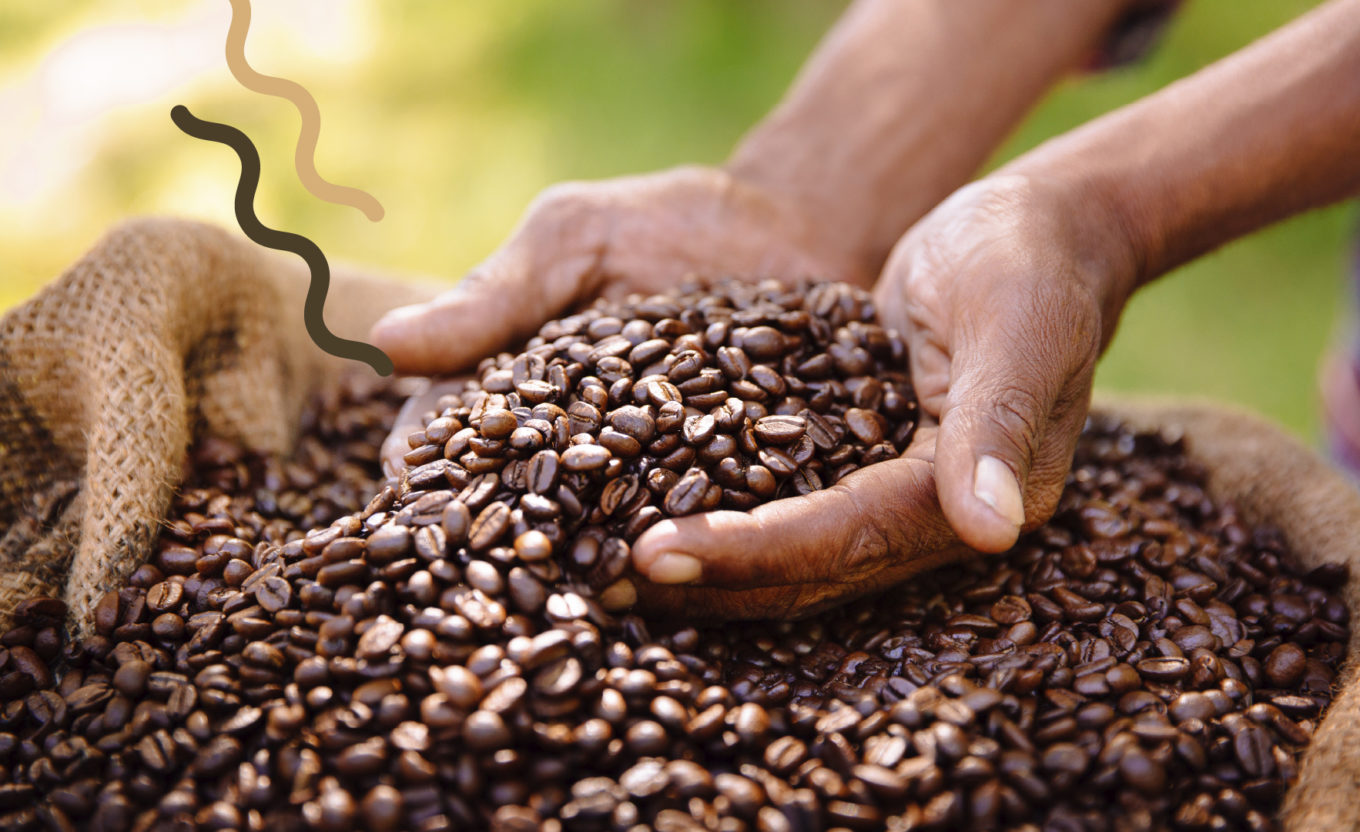The circular economy is a model that aims to minimize waste and maximize the reuse and recycling of products. It is inspired by nature, where nothing is really waste because someone’s waste is a resource for someone else.
When it comes to coffee, we know that only a small part of the product ends up in the cup; the rest – from the husk of the bean to the grounds left over after brewing – is considered waste. Hence, implementing circular economy principles in the coffee industry involves more than just reducing production and waste. It requires a fundamental shift in thinking, where waste is no longer seen as discardable but as a valuable resource for creating other products.
How can coffee production waste be used?
The main wastes that result from coffee production are silverskins, i.e., the films that wrap around the coffee bean, and grounds i.e., the powders that remain after extraction.
Manure and fertilizer production
Organic waste from coffee processing is rich in carbon and nitrogen, elements that are particularly useful in agriculture and can benefit soil composition and plant growth.
Ground to Ground is a Melbourne-based social enterprise that educates coffee lovers about the many different ways coffee grounds can be used for compost and gardening. Cafés that sign up to Ground to Ground’s proposals agree to collect the grounds to offer them for free to interesting customers, helping to reduce organic waste to be treated and providing citizens with natural fertilizer.
On an industrial scale, some companies have also organized themselves. Since August 2021, Caffè Trucillo – a coffee roaster in the province of Salerno – has been supplying at least two tons per month of silverskins to Agriges SRL – one of Italy’s leading fertilizer and manure companies – which uses them for the production of an organic fertilizer allowed in organic farming.
Coffee waste as a renewable energy source
Another interesting transformation of coffee grounds is into fuel. The wads can in fact be dried and converted into pellets or briquettes to fuel biomass stoves and boilers. It all starts with drying the harvested coffee grounds, which are combined with reclaimed wood. It is then pressed and, without the addition of any further substances, pellets are obtained, which are bagged for sale. In addition to enhancing the value of two different wastes, this lowers the need for deforestation.
Coffee grounds also contain a significant amount of vegetable oils that, when extracted, can be converted into biodiesel. This fuel is considered a renewable energy source and has the great advantage of not needing dedicated cultivation because it uses waste materials from other processing.
Bio-bean, a London-based company, has activated a plan to collect used coffee grounds from city cafés and turn them into biofuels by processing 55,000 tons of coffee grounds each year in the United Kingdom to convert them into biomass pellets, biodiesel and barbecue charcoal.
Creative uses of coffee waste
- The grinding of coffee waste, combined with other foods such as mulberry, makes it possible to create a biodegradable paper, which is compostable, nontoxic and acid-free.
- Solid surfaces, tiles and mosaics can be made from a highly versatile and easy-to-clean composite material that includes coffee grounds in percentages ranging from 35 to 60 percent.
- German designer Julian Lechner invented the material Koffeeform made from coffee grounds and natural glue currently used to create cups and plates, but which lends itself to numerous other uses.
The role of companies in the sustainable coffee economy
While enthusiasm and study may be spurred by passionate individuals, a big difference in environmental impact will only be seen when companies change the organization of their supply chains. Moving to circular management takes years of work and the commitment of all roles: entrepreneurs, scientists, roasters and coffee lovers. There is no shortage of ideas available.





